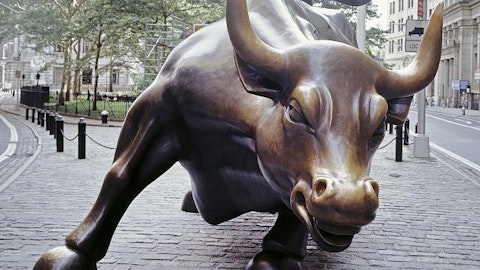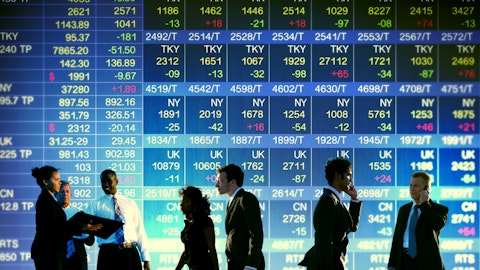We are not surprised that manufacturing data are weakening, given that the distortion of the production structure is at its widest ever. To put this in different terms: the economy is tying up too many consumer goods in long term projects relative to the amount it releases. Those engaged in long term investment projects that will only bear fruit in the form of goods ready for consumption after a very long time need to be sustained – and that means that their demand for the entire plethora of consumer goods needs to be satisfied during the waiting period (they will need more than just food and shelter). This is why an imbalance in the time structure of production cannot be sustained in the long run.
Reality vs. Fantasy
You wouldn’t know any of this watching the stock market, which is best described as “fantasy land” at the current juncture. Then again, the stock market is always the last market to notice that something is amiss; to wit, it made a new all time high in October of 2007, even though the credit and bank funding markets were already in an advanced state of panic.
In Thursday’s session, the Nasdaq and Russell 2000 indexes actually outperformed the broad market, which is normally a positive technical sign. However, if one looks at the ratio charts, one can still see that the Russell remains in a short/medium term downtrend relative to the broader market, and that is generally not a good sign – especially as it has been an upside leader for the bulk of the asset bubble progression since March of 2009. By contrast, the NDX and COMPX have maintained their relative strength trend so far, so in this sense we are looking at a mixed bag.
RUT-SPX ratio, NDX-SPX ratio and the SPX over recent months – a mixed bag of signals – click to enlarge.
We were greatly amused to learn via Reuters that the market allegedly rose because “[…] Of the companies that reported earnings so far this season, 67 percent have exceeded analyst estimates, compared with 49 percent in a typical quarter”. Earnings season not over yet, but this mainly indicates to us that the combination of lowering the bar (by analysts ratcheting own their expectations as the reporting season approaches) and financial engineering (on the part of companies) has likely reached fresh heights of absurdity. If the Yellowstone Caldera were to explode tomorrow while concurrently a three billion ton iron-nickel asteroid planted itself in the Pacific at 70,000 miles an hour, earnings would still “beat expectations” next quarter. The market would probably not rise under these circumstances, though we cannot rule it out either (the fact that trading would have to be conducted underneath a mountain of volcanic ash might complicate things a bit).
As an aside: the Reuters article also mentions the tired old “money on the sidelines” canard. This is not a variable (apart from the growth of money substitutes due to monetary inflation). Someone always holds all the money in the economy, and someone always holds all the stocks in issue. There are no unowned stocks floating about in the ether, and when stocks are sold, no new money comes into existence – the two merely change ownership.






